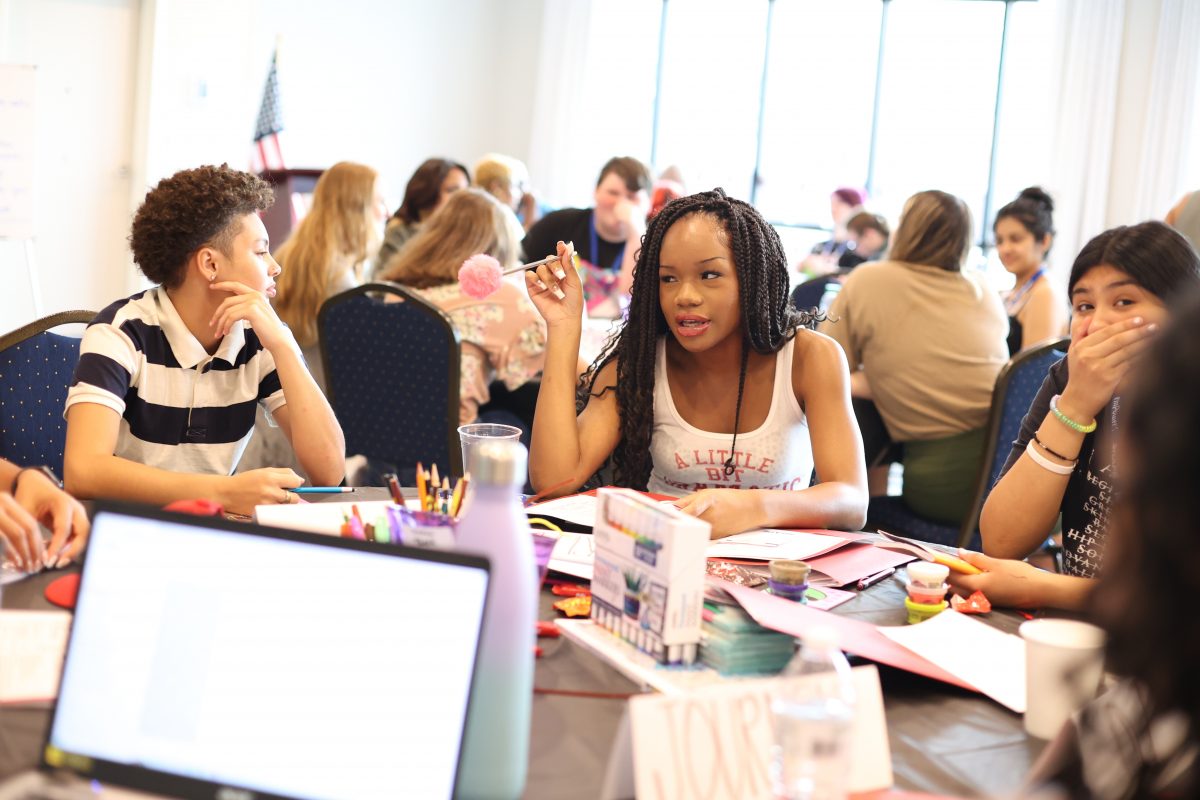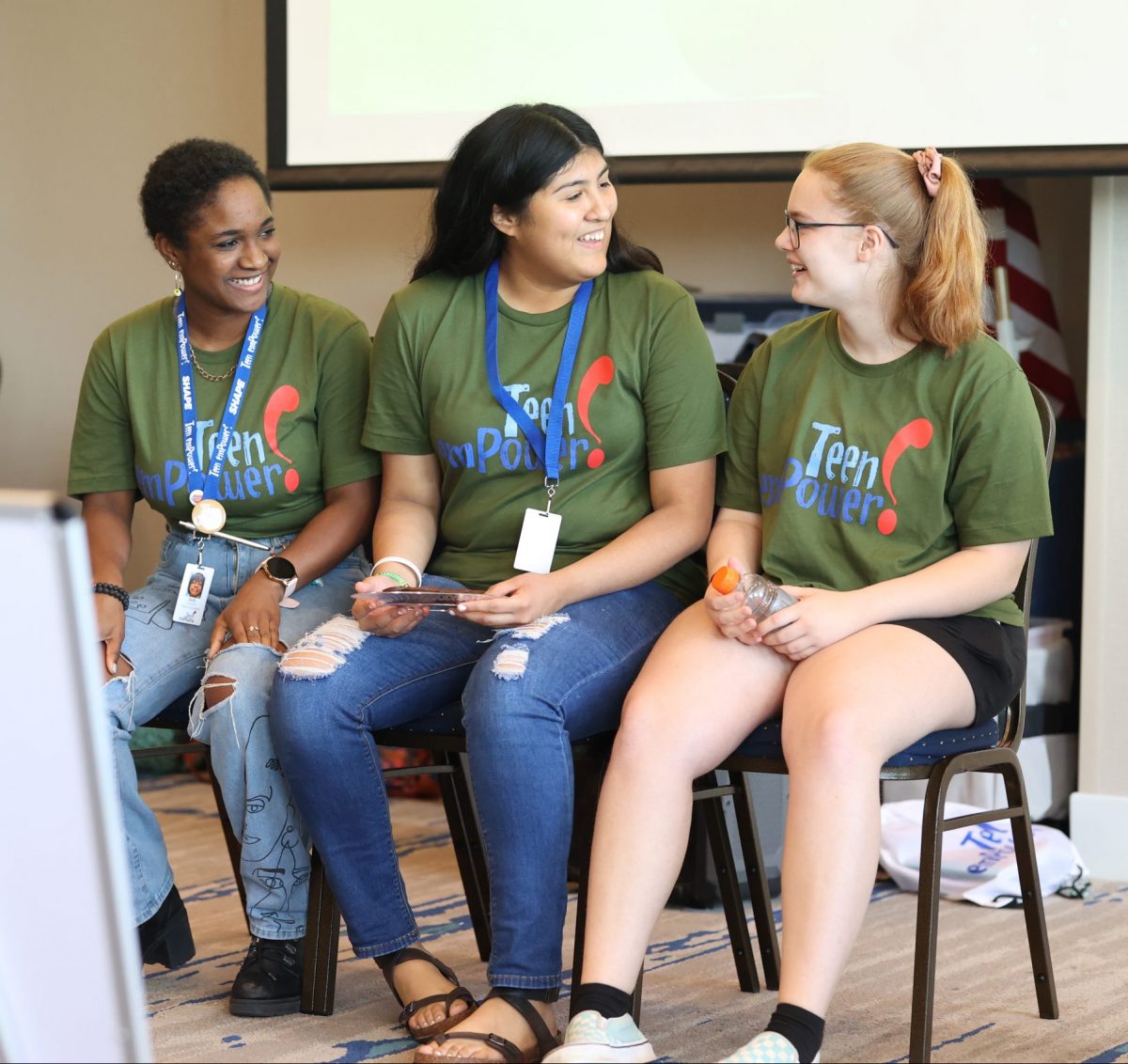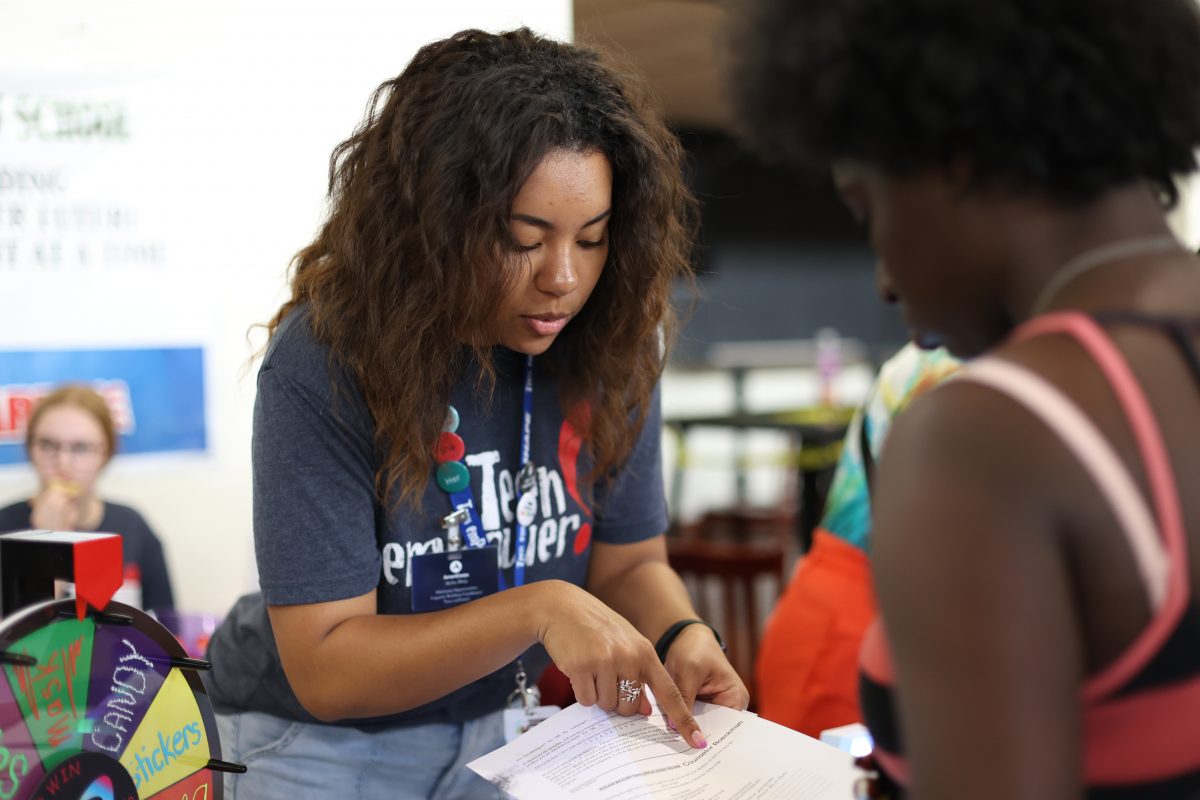Posts Tagged ‘positive impact’
We Want Healthy Futures For Our Youth
I chose to become an educator because I want to equip youth with the tools necessary to be successful. Sexual health education particularly spoke to me because I know the potential outcomes of early sexual involvement and how these outcomes can have lasting impacts. Here at Teen emPower! Inc., we believe every young person deserves the chance to make healthy decisions that empower them to create the life of their dreams.
Of course, parents want the same thing. However, not all parents are equipped with the necessary sexual health information that young people need because of the lack of sexual health opportunities provided in our state and indeed, our country. Additionally, not all parents feel comfortable because, unfortunately, discussing sexual health topics remains taboo in many environments and cultures. That’s why we focus on teaching young people things they need to know about sexual health including consent, decision-making, relationships, self-esteem, and communication.
Today, more than ever, young people are exposed to unfiltered information via social media and the internet. While these resources can be a great source of community-building and story-telling, online sources for sexual health may not be age-appropriate or medically accurate. Teens need sexual health education provided in a safe, stable environment that will encourage them to make healthy social and personal decisions once they understand the potential outcomes of their choices.
There is a minority who would like to see sexual health education completely removed from schools. You may have seen them posting on social media or organizing public events. They are motivated by a fear-based misunderstanding of what our sexual health programs provide.
We want this group to acknowledge that our state ranks 4th highest for teen births and that 26% of new HIV infections occur among youth ages 13 to 24 years. We want them to know that the youth who experience our programs consistently report high levels of appreciation for this education and have expressed their gratitude in hundreds of thank you letters we have received.
If we want to see healthy futures for our youth, society needs to continue to support projects like our peer education program and sexual health education in schools.
- I encourage people in our community to speak up for themselves and for the young people who don’t have a political voice or who don’t vote yet. Speak up for the educational programs that help youth establish healthy goals, and speak out against those who seek to limit the impact of youth programs.
- I encourage parents to talk with their children at home about sexual health topics, including handling emotions in social settings and consent for any type of touch, not only sexual.
- I encourage teachers to speak with students about the impact they can make in their schools and overarching community so the students understand their value.
- I encourage influential adults to help youth with their developmental needs by encouraging community involvement, positive social skills, and boundary setting.
Developing assets for young people takes an involved community who is willing to devote themselves to youth needs. By supporting programs like Teen emPower!, you are supporting healthy futures for Oklahoma students.
Positive Youth Development
Stevie spends extra time after school, hanging out with friends instead of going home. Those friends sometimes do things Stevie doesn’t feel comfortable with, but Stevie doesn’t have many options since there’s no money for after school programs and other opportunities.
Stevie often shows up late to school and misses most of first period, which may lead to failing History. It was a favorite subject in middle school, but now that Stevie’s mom works overnight, getting to school on time is a struggle.
Stevie needs positive youth development opportunities, both in school and during out-of-school time, but what exactly does that look like?
Positive Youth Development (PYD) is “a research-based framework or approach that communities can use to help young people develop to their full potential.” In short, it’s programs, organizations, and relationships with people who want to enrich the lives of youth so they may learn, grow, and succeed.
When it comes to positive youth development, one might first think about all the things we need to ‘fix’, or about eliminating risk factors (things that cause negative outcomes). Reducing risks that have negative consequences should be coupled with an array of positive opportunities and experiences. However, risk reduction alone isn’t always the most effective course of action and sometimes it may not be possible at all.
Instead of focusing only on risk reduction, we should focus on building resiliency through protective factors or things that ultimately lead to positive outcomes. These factors will help protect youth from those risk factors, while also helping them gain important learning experiences and skills. Building that resiliency can carry lifelong positive effects for a young person, because we know adversity does not stop after adolescence!
Search Institute has identified two types of protective factors, which they call assets: Internal and External. You may recognize these terms from our blog about Developmental Assets. When youth have positive adult and peer role models in their life, those role models can help them develop as an individual AND protect them from negative influences.
The PYD framework primarily focuses on those external factors and seeks to make youth a part of a community based collaboration. “Rather than focusing solely on behavior change among youth, the positive youth development approach seeks to change the environments in which young people grow, act, and make decisions.” Engaging youth as partners in PYD efforts is vital to the success of effective programs.
If you’re anything like us, you’re already excited to help with positive youth development and want to know where to start.
- Mentor a young person. There are programs all over OKC, like Big Brothers, Big Sisters, that give adults the chance to work directly with the youth. Maybe this feels like a big commitment? Then try finding a young person in your life who needs some motivation and direction. That’s mentorship, too!
- Educate yourself on programs providing basic needs for young people. The Regional Food Bank of Oklahoma offers various services under their Food for Kids program. This program is especially important because, as we well know, youth cannot further develop in and out of school if their basic needs are not being met. If these programs speak to you, try to get involved!
- Support organizations that encourage young people to make healthy decisions. Our classroom educators and SHAPE program offer direct service to thousands of youth annually. The education we provide helps young people learn how to have positive relationships and keep themselves safe, while motivating them to reach their goals and dreams.
Praise the Effort, Not the Person
Which would be more beneficial to hear? “You’re so smart!” or “You worked so hard!”
Interestingly enough, there is substantial information on how statements praising effort, rather than praising the individual, have significant positive impacts on young people.
Carol Dweck, a researcher at Stanford University, is one of the world’s experts in the study of motivation. Her research has found that certain types of praise can help motivate students to try harder and take on new challenges, while other types of praise can lead to students choosing easier options and believing they don’t need to put forth the effort. These differences highlight fixed versus growth mindsets.
A fixed mindset can form in a young person if they are too often praised solely for their intelligence or talents. This fixed mindset could lead to someone believing they do not need to work hard for what they want because things like school, sports, or special skills have come naturally to them. It focuses more on abilities, which can backfire if a student believes they inherently have what they need to succeed, and then fails a test or doesn’t make the team at tryouts. This can be detrimental to their motivation to try again next time or continue working towards their goals.
A growth mindset forms in a young person who is praised for their effort and progress. An adolescent with a growth mindset is more likely to develop into someone who works hard when they have a goal because they believe effort leads to achievement. It focuses more on hard work, which encourages young people to focus, practice, and persist through difficulty. If they end up failing or not reaching their intended results, they are more likely to try again or try something different.
We can see the benefits of fostering a growth mindset over a fixed mindset, but how can we change our language to support this positive development in young people?
Consider providing positive and corrective feedback. Meaningful positive feedback requires altering what we notice and what we bring attention to. It’s easy to react with praise for an individual, but taking a moment to be intentional with praise could be more meaningful on the receiving end. Corrective feedback is key to encouraging a growth mindset when a young person gets something wrong. This could be especially useful for parents who need to inspire their youth to accomplish chores around the house or put in effort in school.
Can we change our internal messages to develop a growth mindset for ourselves, too? YES.
In the book, In Other Words: Phrases for Growth Mindset: A Teacher’s Guide to Empowering Students through Effective Praise and Feedback, the authors discuss how to respond to our own fixed mindset self-talk.
If you think “I’ll never be as good as them.” Tell yourself, “I did better than I have done before!.”
If you start to tell yourself, “I don’t have what it takes,” remind yourself, “I’m just not there YET.”
Instead of saying, “This is too hard,” say, “If it were easy, I wouldn’t be learning.”
With this change in mindset, both for ourselves and for the young people we interact with, we can develop a basis for positive self-motivation and a sense of control over what someone can achieve when they put in the effort.
For more about the benefits of teaching a growth mindset, watch this video, featuring Carol Dweck, from Stanford.



